After dengue outbreak in Firozabad, malaria raises its ugly head in rural Uttar Pradesh
With Firozabad, Agra and Mathura districts struggling to contain the dengue outbreak, which is killing young children, several districts in the state are reporting a rise in malaria cases. Encephalitis cases are also trickling in. Rural Uttar Pradesh is in the grip of fever. A Gaon Connection report.
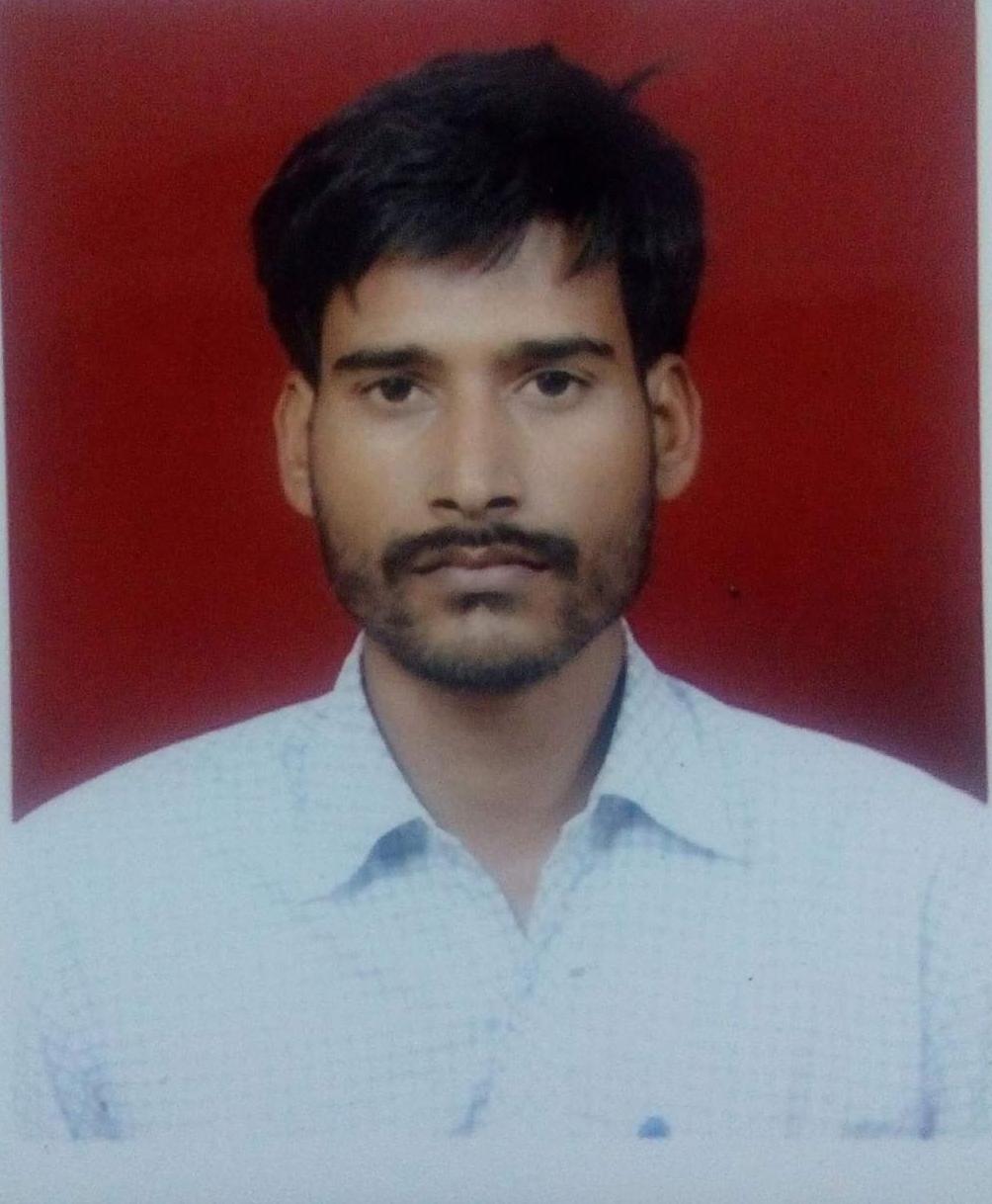
Raghuvar Dayalpur (Sitapur), Uttar Pradesh
Fear has gripped over 300 residents of Raghuvar Dayalpur which has recently been labelled as a ‘sankramit gaon’ (infected village). This village, about 150 kilometres from the state capital Lucknow, is in the grip of a malaria outbreak. Household after household in the village is complaining of jaddua bukhaar, a local term for malaria whose common common symptoms include shivering and very high fever.
“Malaria ka prakop hai (It is an outbreak of malaria),” Ram Prakash, the gram pradhan (head) of the village in Maholi block, told Gaon Connection. “Health team visited our village and did testing. Some villagers in Raghuvar Dayalpur have been found malaria positive. They have been given medicines,” he added. “Today (September 7) more blood samples have been collected and the report should come by tomorrow,” the pradhan informed.
According to the village head, fever patients in the village have increased rapidly in the past 10-12 days. On being asked how many villagers would have died due to bukhaar, he said: “Four to five people would have died of which one was a child.”
While Firozabad, Mathura and Agra districts in western Uttar Pradesh have hit the headlines for an outbreak of dengue (earlier believed to be mystery fever), which has killed at least 54 people, mostly young children in Firozabad alone, reports of malaria outbreak are pouring in from some other districts of Uttar Pradesh.
Also Read: Firozabad echoes with the wails of grieving mothers whose children succumbed to a mystery fever
Sitapur is one of them. The district hospital in Sitapur is packed with patients and not a single bed in its children’s ward is empty. Patients from even Lakhimpur district have been admitted here. Jaddua bukhaar is a common complaint.

“My child has been running a fever for the past four to five days. The fever goes down and then again shoots up. Doctors have told me it is malaria,” Rakesh Kumar Yadav, whose child is admitted at the district hospital Sitapur, told Gaon Connection.
Kadeer Khan’s child is also admitted at the children’s ward of the same hospital. “My child has been running a fever and complaining of stomach pain and vomiting for the past eight to ten days. We showed at the government hospital in Lakhimpur but they referred the child to Lucknow. While we were on our way to Lucknow, the child’s condition worsened and we got her admitted at the district hospital in Sitapur,” Khan, who is a resident of a village in Lakhimpur, told Gaon Connection. “The entire ward is full of children suffering from bukhaar,” he added.
Also Read: Firozabad mystery fever: Two days of fever and stomach ache, and Manya is now just a memory
Madhu Gairola, the chief medical officer (CMO) of Sitapur, informed Gaon Connection that at least 77 malaria cases have been reported in the district, but no deaths have occured, she said.
“People are indeed infected with malaria and other vector-borne diseases but efforts are on to contain the outbreak. Anti-malarial treatment is being given to all those who are diagnosed to be infected and we are sending teams to fumigate the areas with stagnant water,” she said.
A total of 308 patients with high fever are admitted in the Sitapur district hospital and 90 out of them are minor, reads the official health bulletin.
Dirt, disease and death
Forty-year-old Savitri Devi, a resident of Raghuvar Dayalpur, cannot read official statistics on fever cases and deaths. All she knows is that the bukhaar claimed the life of her 12-year-old son Amarjeet, who died on September 5 at Dr Ram Manohar Lohia Hospital in Lucknow.
The ‘death summary’ of the child, issued by the government hospital (Gaon Connection has a copy of it), reads: respiratory failure, acute encephalitis syndrome (AES) shock, and disseminated intravascular coagulation (DIC) as the cause of death.

With her voice choking and words breaking, Savitri Devi uttered: “Bukhaar”. And then pointing towards her chest, the grief-stricken mother said: “Uska ye nahin kaam kar raha tha”. (His chest was not functioning)
“That’s all the doctor told me. My son couldn’t breathe in his last few moments,” the deceased Amarjeet’s mother said.
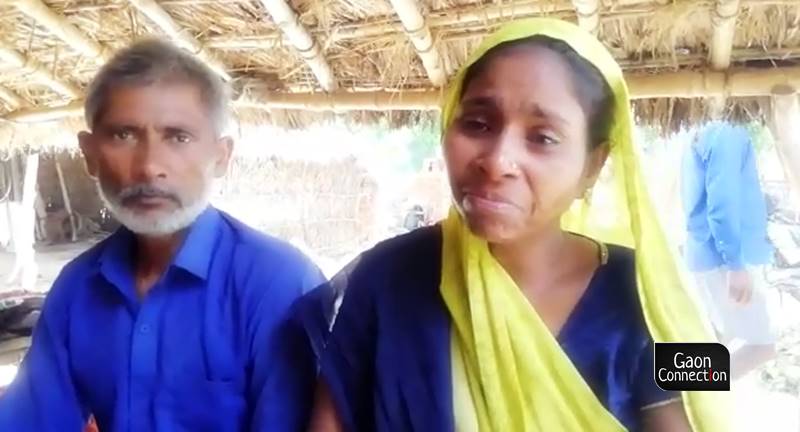
A walk around the streets of Raghuvar Dayalpur is enough to tell the reason behind why the village is ‘sankramit’. Stagnant water pools abound the village streets and putrefying waste was seen dumped all around.
“Malaria or dengue, these fevers spread due to gandagi [filth] and mosquito,” admitted Ram Prakash, the pradhan. “Since the rise in fever cases, health teams are visiting the village and fogging [for mosquito control] has also been done,” he added.
In the village, Gaon Connection met Minanshi, a young girl, who said she had been running fever for the past 10 days and a medical team had visited her village. Her blood test was done too and she was found malaria positive.
“Wo log sui chubha ke khoon ki jaanch kiye the, bole malaria wala bukhaar hai aur kahe kal dus baje tak aayo dikhane Maholi main,” Minanshi said in her frail voice with a smile. (They tested my blood and told me that I am infected with malaria. They also asked me to visit the Maholi health centre the next day at 10 am). This health centre is about 10 kilometres from the village.
When asked about whether she went to the health centre, the girl answered with a “nahin”. (No)
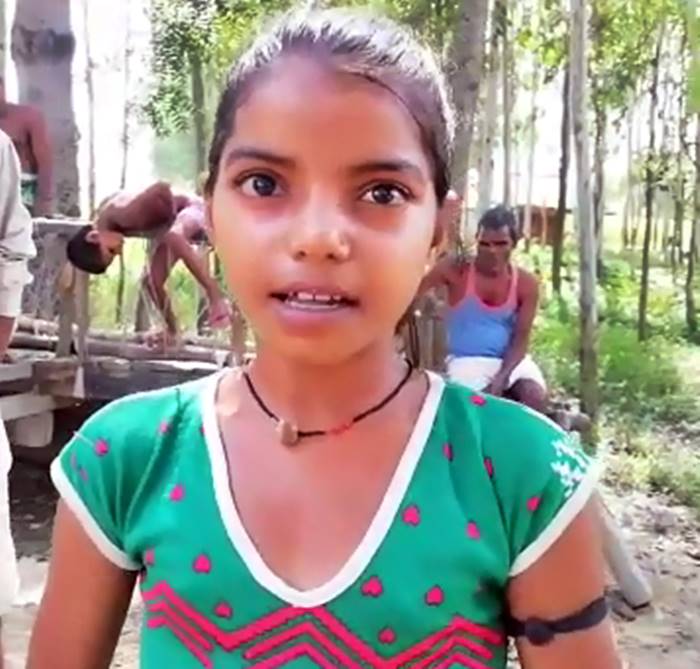
Another village resident Rajpal’s 14-year-son has also been found positive for malaria. “The health team has tested about 20-25 villages and malaria has been found to be most prevalent,” said Rajpal. On being asked how many people in his village would have died of malaria, Rajpal said: “Four to five people would have died.”
Rural UP in the grip of fever
After the floods, which had affected over 26 districts in Uttar Pradesh, there has been a spate of vector-borne diseases across the rural areas of the state. Apart from Firozabad, which has become the hotbed of the dengue outbreak, districts like Varanasi, Budaun, Sitapur, Farrukhabad, Unnao, Barabanki, Hamirpur, Jalaun, Sonbhadra are also reporting a rapid rise in fever cases. At some places it is dengue fever, whereas some districts have reported malaria patients, and some just seasonal viral fever.
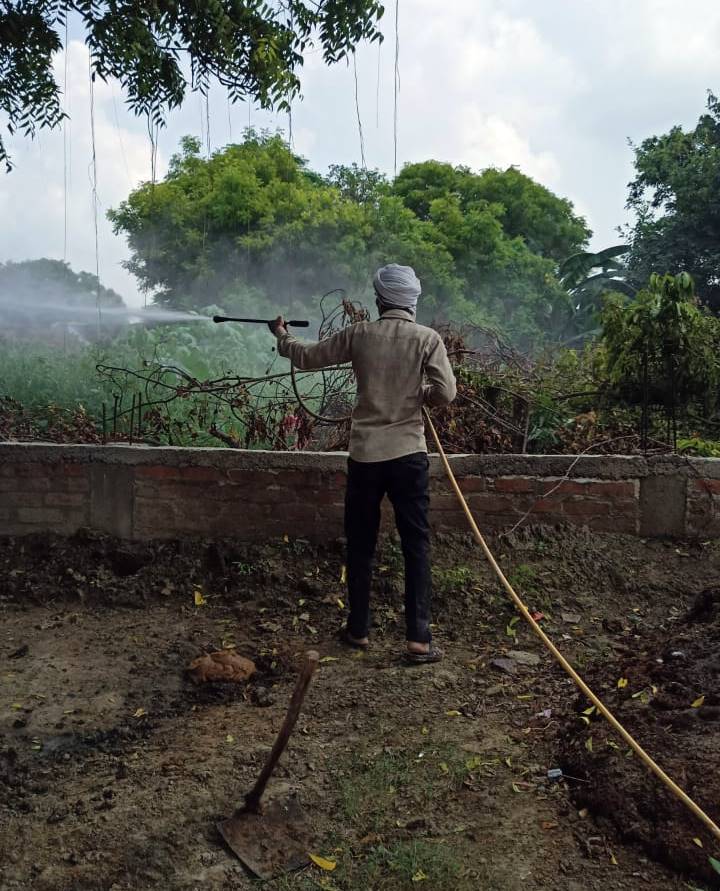
Also Read: Battered by floods, Varanasi now hit by dengue outbreak
On September 5, Teacher’s Day, 42-year-old Sunita Devi, an anganwadi worker in Sadar tehsil of Unnao, died due to fever. “For the past five to six days, she was running a fever. Initially we took her to a local private doctor. But when she got no relief after two days of medication, we took her to Kanpur,” Prem Prakash, the husband of the deceased worker, told Gaon Connection.

According to Prakash, when Sunita Devi’s condition deteriorated due to vomiting and dysentery, he took her to a private hospital in Lucknow where she was administered medicines. “However, while bringing her back home, her condition worsened and she died on the way,” the widower said. She was the sole earning member of the family and has left behind three children.
Brij Kishor, a child health specialist at the district hospital Unnao, told Gaon Connection that there has been a huge increase in the number of children availing medical aid for high fever-like symptoms.
“Fifteen days earlier, I used to receive almost a hundred patients on a daily basis. But now, the numbers have soared to 150-160 per day. There hasn’t been any patient of dengue or malaria so far but people suffering from viral fever is very high,” Kishor said.
Dengue and japanese encephalitis reported in Barabanki
Barely 30 kilometres from the state capital Lucknow, Barabanki district has reported at least eight cases of dengue and two cases of japanese encephalitis in the last two weeks, informed the district bulletin. These patients have been referred to hospitals in Lucknow.
On September 6, a total of 1,450 patients were seen in the out patient department (OPD) of the district hospital out of which almost 700 reported viral symptoms.
The chief medical superintendent of Barabanki, VK Singh told Gaon Connection that most of the patients coming to hospital are reporting viral fever.

In Barabanki district only, Akbar Ali, a doctor at the Suratganj community health centre (CHC) told Gaon Connection that there has been an increase of almost 30 per cent in the number of patients approaching the CHC. “Majority of the patients are either in the age group of one to seven years, or are above 50 years old,” he said and added that no dengue case has been identified at his CHC.
Also, Budaun has reported cases of Malaria and at least 39 such cases are known to be confirmed.
Meanwhile, the health infrastructure of Sonbhadra district which borders four states – Jharkhand, Madhya Pradesh, Chhattisgarh and Bihar – is also facing the heat due to rising fever cases.

“The patients that are coming to clinics these days are complaining of high fever, body ache, headache and these patients have far less number of white blood cells (WBCs) and platelets in their blood,” KK Chaurasiya, a physician from Sonbhadra told Gaon Connection. “The people here are not very aware as well. Most of them come to doctors like us when their condition turns critical. Most of these people are poor and cannot afford timely treatment as well,” the physician added.
In Farrukhabad district, almost 100 children are reportedly infected with the mystery fever. Also, three children have died due to the fever in the last seven days, claim news reports (not independently verified by Gaon Connection).
The situation is similar in the Hamirpur district which is situated in the Bundelkhand region of the state. As per the information shared by the district hospital, in the last week, a total of 1,068 patients have been admitted in the health facility, more than half of which manifested flu, fever and cough-like symptoms.
‘Fragile immunity, unaware parents’
Meanwhile, a medical practitioner from Farrukhabad told Gaon Connection on the condition of anonymity that apart from the outbreak of vector-borne diseases and lack of sanitation in the localities, poor immunity levels of the children are contributing to the morbidity and the seriousness of the infection.
“These children have been stuck in their homes for almost a year and a half. They have had negligible exposure to the outside environment for a long time. Now suddenly everything has opened up, festivals are being celebrated and schools are open too,” he said.
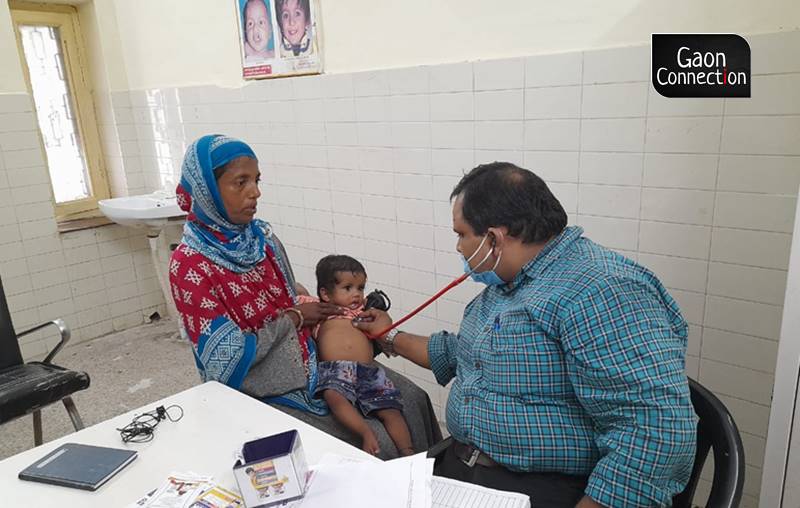
“The poor levels of immunity are resulting in excessively dangerous levels of infections in the children which otherwise are not as intense as they are this year,” the physician added.
The chief medical officer (CMO) of Farrukhabad, Satish Chandra, raised similar concerns. “It’s not just the outbreak of vector-borne diseases that is affecting the children but a significant number of cases are due to poor awareness amongst the parents of the infected children,” Chandra told Gaon Connection.
“Obviously the children are more vulnerable to infection due to their lack of exposure for a prolonged time and their immunity is low but another factor that is contributing to the outbreak is the lack of willingness in parents to avail timely treatment,” the Farrukhabad CMO said.
“There is utter disregard for removing stagnant water from the households. Our department is overwhelmed with the cases. Our teams visit these areas and find that larvae are present in the stagnant water at odd places all across the households. Parents need to be responsible as well,” Chandra added.
Written by Pratyaksh Srivastava with inputs from Virendra Singh in Barabanki, Sumit Yadav in Unnao, Bheem Jaiswal in Sonbhadra, and Brijendra Dubey.

